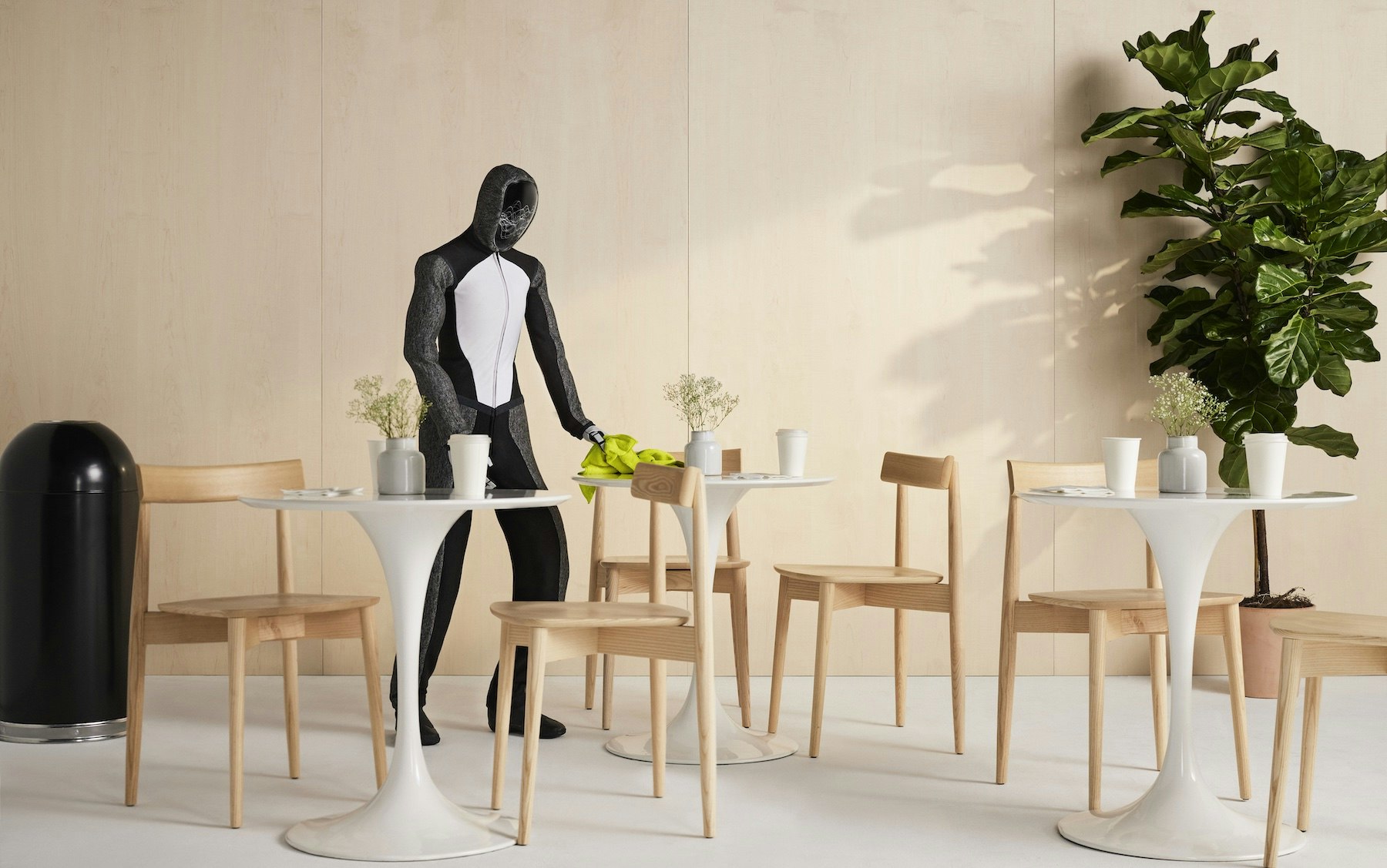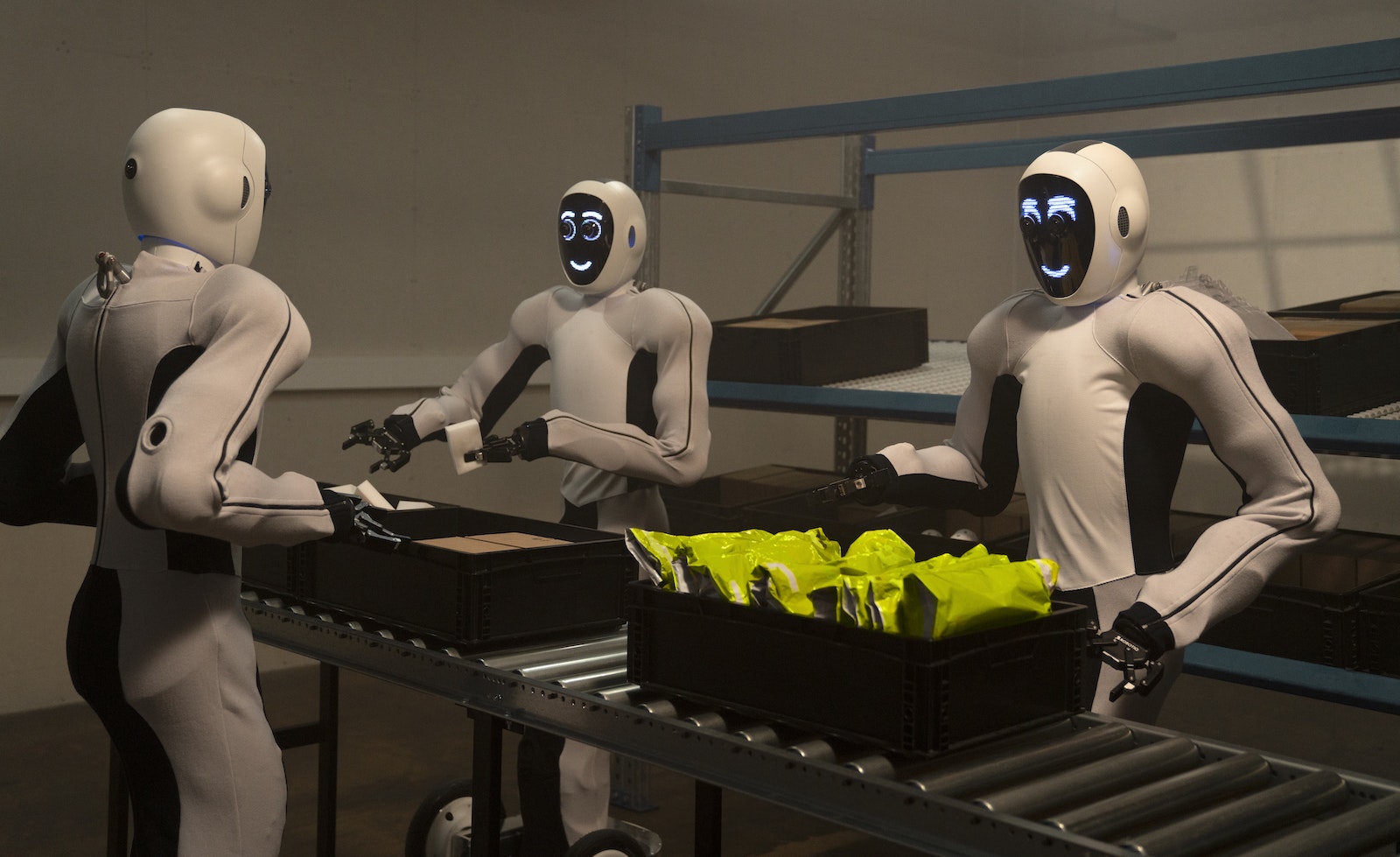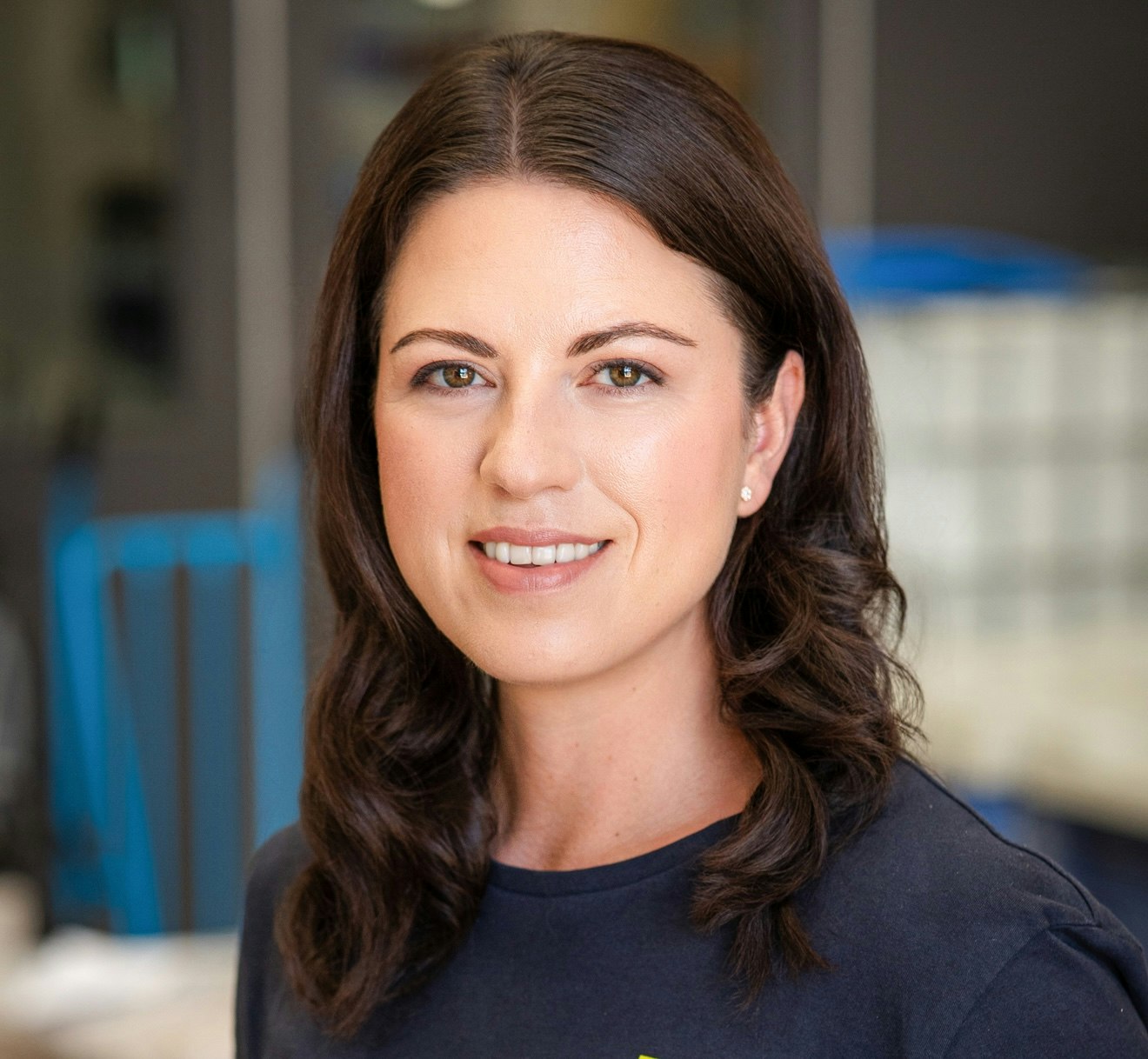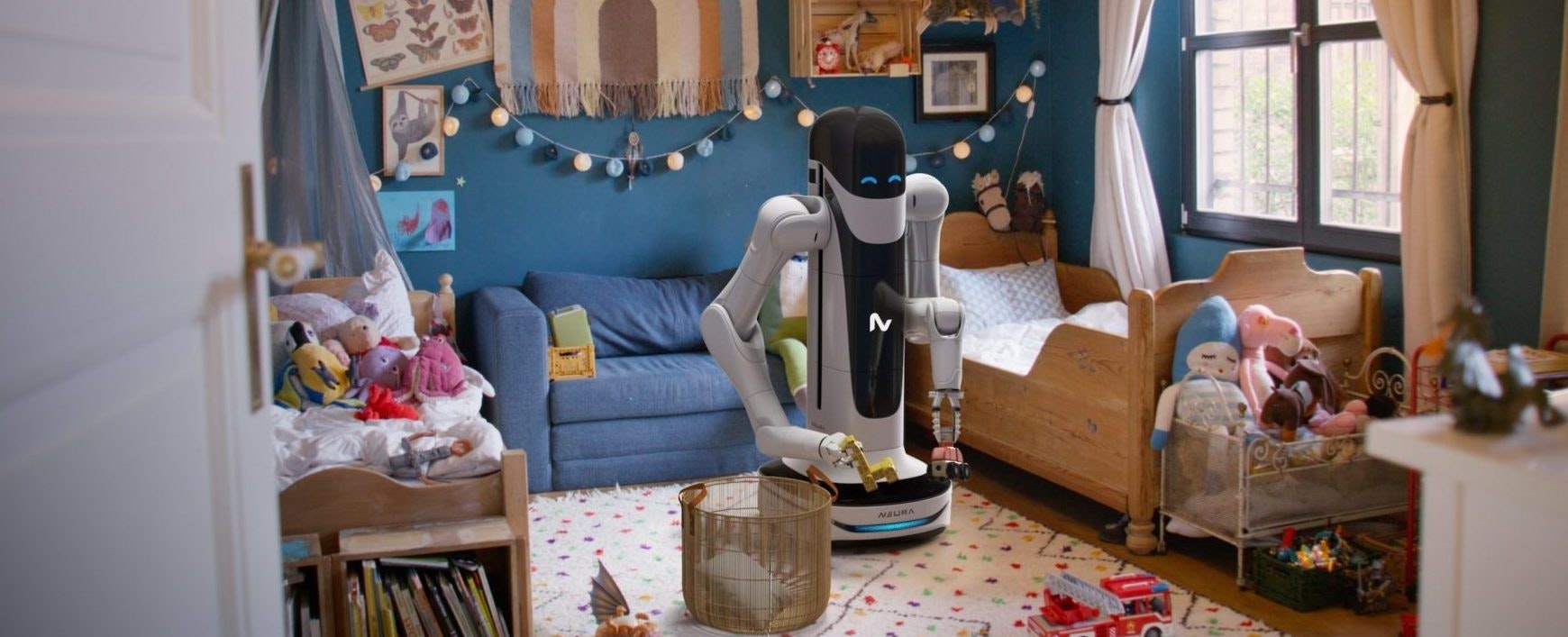The idea of two-legged robots to tidy our homes has been the stuff of science fiction for decades. That is now about to change.
Norwegian AI startup 1X is today announcing its $100m Series B, led by EQT Ventures.
The company that added OpenAI and Tiger Global to its shareholders for its Series A last year will use the capital to launch its new android NEO, tailored for everyday domestic tasks for consumers.
From an idea to a bipedal humanoid
1X, previously known as Halodi Robotics, was founded in 2014 and is headquartered in Moss, south of Oslo. Its first-generation android, named EVE, has been around for the past four years and is an 80kg-heavy android with wheels for legs.
The bot was spotted last week serving commuters coffee at a train station in Oslo.
The company’s mission is to address global labour shortages and its first android EVE is already being put to work in fields like logistics and security (guarding). But with its next-generation android NEO, 1X is taking on an even more challenging area — people’s homes.
In comparison to EVE, NEO weighs only 30kg, has a soft layer over its core of aluminium and has two legs instead of wheels.

Since the robot’s focus will be to help people with their daily tasks at home, the two legs allow the robot to get into harder-to-reach places, explains 1X CEO and cofounder Bernt Øivind Børnich.
“We don't care too much about walking. The hard problem is what we've already been working on for many years, which is manipulation. Having two legs is incredibly important in the home because you need to be able to do so much at such a small footprint,” Børnich says, using the example of reaching over the sofa to plug something into a wall socket. That would not be possible for a robot on wheels.
To let a robot work in a warehouse is one thing but to let it into customers’ homes is a very different challenge, where safety is of great importance. This is also the reason why NEO is light and soft-skinned. It also won’t take risks such as picking up a heavy object when there’s a person nearby, in case it drops it.
But teaching robots the kind of generalised understanding of their surroundings that they need to make these decisions isn’t an easy task and one of the reasons why they haven’t been around until now.
Having OpenAI and NVIDIA as sparring partners
1X first reached out to ChatGPT developer OpenAI in the summer of 2022, a few months before the landmark chatbot was released to the world. The discussions ended with OpenAI leading 1X’s extension of its Series A of $23.5m in early 2023.
“When I first started talking with Sam [Altman, CEO of OpenAI] about this, it was before most people thought this [making this type of androids with the help of AI] was possible because it was before ChatGPT and there were no real successes to point to, especially in robotics, which is lagging a few years behind the digital space,” Børnich says.
“Getting that validation for the technology, and expanding our network and having the right access to the right type of people and all this has been really good but also having a lens to see what's coming.”
Another company that has played a big role in 1X’s growth is the US-based tech giant NVIDIA, the developer of high-performance GPU cards. In 2023, it released how it’s using large language models (LLMs) to automatically generate reward algorithms to train robots to accomplish complex tasks, and 1X says it is able to benefit from using NVIDIA’s software in its androids.
“NVIDIA is more of a partner than a competitor as it, at least so far, is not moving into the hardware space of making its own androids. It makes the tools that enable us to scale our AI and deploy our AI, so a very good partnership,” Børnich says.
How does 1X train its androids to do tasks?
1X is also working on its own bespoke AI models to control its household robot, a task that requires heaps of training data.
But when teaching robots how to put cups in a dishwasher, that data isn’t something you can replicate by letting it learn from books on how to become a domestic help. But according to Børnich, 1X is teaching the androids in a similar way to LLMs.
“So the main way we teach robots how to do things is that we clone human behaviour and human thought into the machine. This is very similar to how you train large language models,” he says.

And where LLMs are trained on huge amounts of text, the system that powers 1X’s robot is taught using expert demonstrations from humans.
“We are gathering the same [as for LLMs] for how it is to behave in our world. We have an operator who has a VR headset on, who sees and hears through the eyes and ears of the robot and the robot follows the same motion of the body as the operator,” he says.
“We not only show the behaviour of how you do the tasks with your body, but we also try to show the thought process so that the data will be labelled with my thought process,” he says.
By the operator saying what it does and the reason for it at any given time, the different tasks, such as adding cups and saucers to a dishwasher and choosing where to put them, will also be added as text to the training system.
“This is how we hope to get AI models that have a way richer world understanding. It's very important for the next steps in AI paths,” he says and that is also why 1X has decided to make a consumer-facing robot. “This is where the enormous amount of data and the diversity of data is so that we can solve the hard problems in AI.”
Making the robots solve issues it hasn’t learned from data
Børnich says that advances in LLMs — which can tackle a very broad range of questions and prompts — are transferable into 1X’s AI systems, which should allow its robot to adapt to a broad range of situations without making unsafe decisions.
“What we do see for our large models is that there is what we call generalisation,” he explains.
“So this means there is an understanding of how to do things that weren't specifically in your data set depending on the other data you had. And this is incredibly important for us, especially in the home, to be able to have robots that are safe. Safety is something that requires a very, very good understanding of how the world works.”
Today, 1X has 50 robots running around doing a large variety of tasks and data-gathering in its warehouse in Norway.
“It's been quite a journey, going from a situation where we have a couple of robots and re-testing things in the lab, to having 50 robots running for 8 to 16 hours every day, including our robot at home, which is tidying up after family and learning how that works in the real world,” Børnich says.
The investment
The $100m Series B was raised to be able to mass produce the new android, and although Børnich isn’t yet ready to say how much it will cost, he says that it will be “very affordable” in comparison to similar systems already on the market.
“It wasn’t so long ago that we raised our Series A, but due to the results we're seeing in our AI stack right now, we see that we are at the point where we can start scaling these models. And that means scaling our data collection; it means scaling the size of compute data for training our AIs, and of course, also means scaling up our factories and getting to volume manufacturing of our NEOs,” he says.
Apart from EQT Ventures leading the Series B, the round also included a significant secondary transaction in which existing Norwegian VC Sandwater increased its stake with the third-largest contribution to the round. Other secondary participants included new investor Samsung Next and existing Norwegian investors Skagerak Capital and the Nistad group.
With the Series B, 1X has raised over $125m in total.



